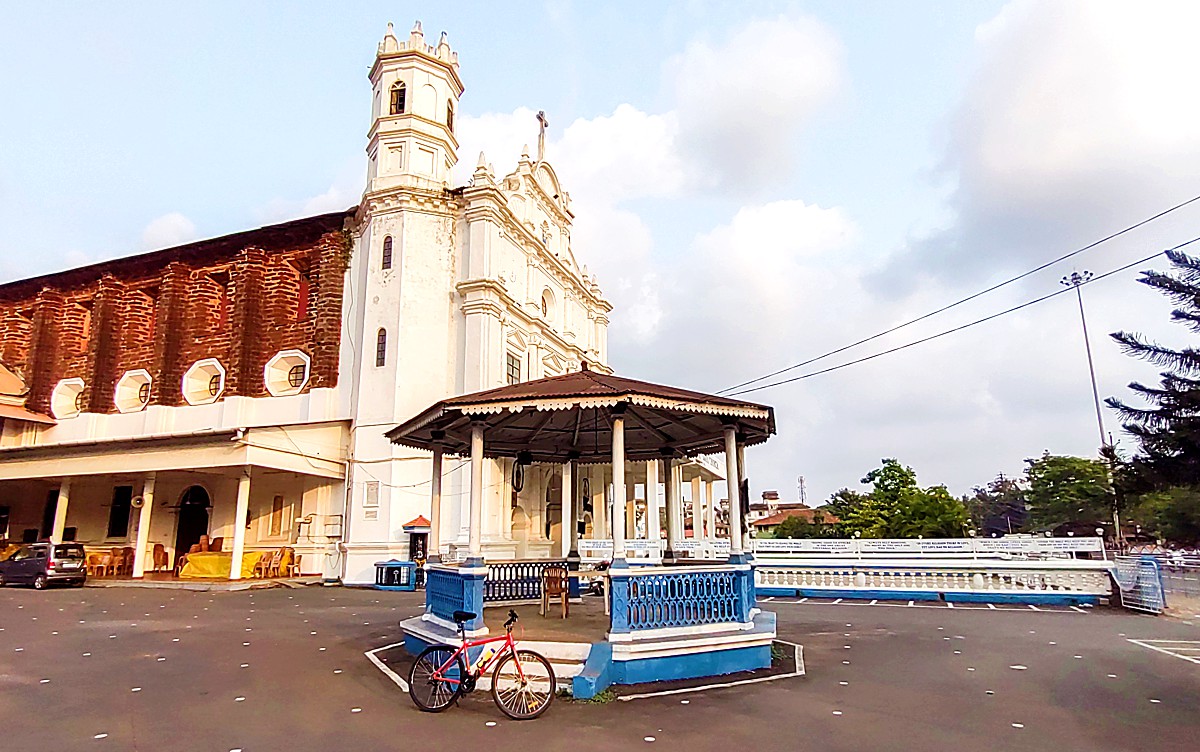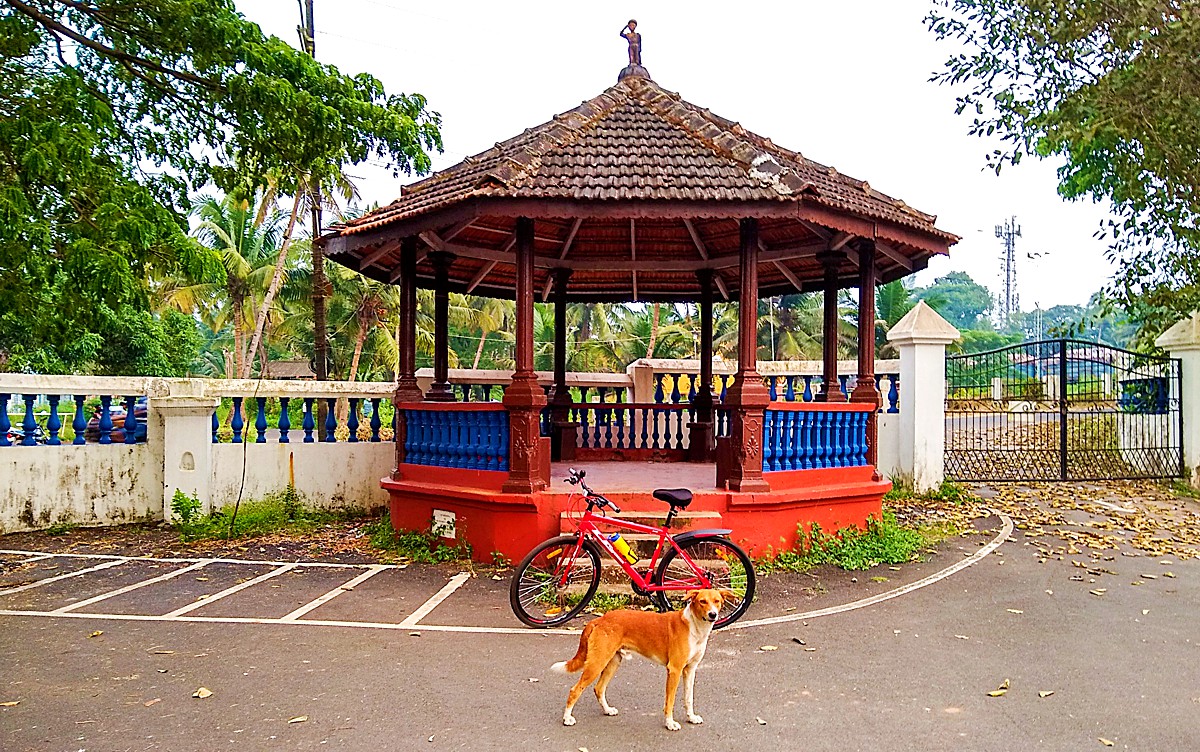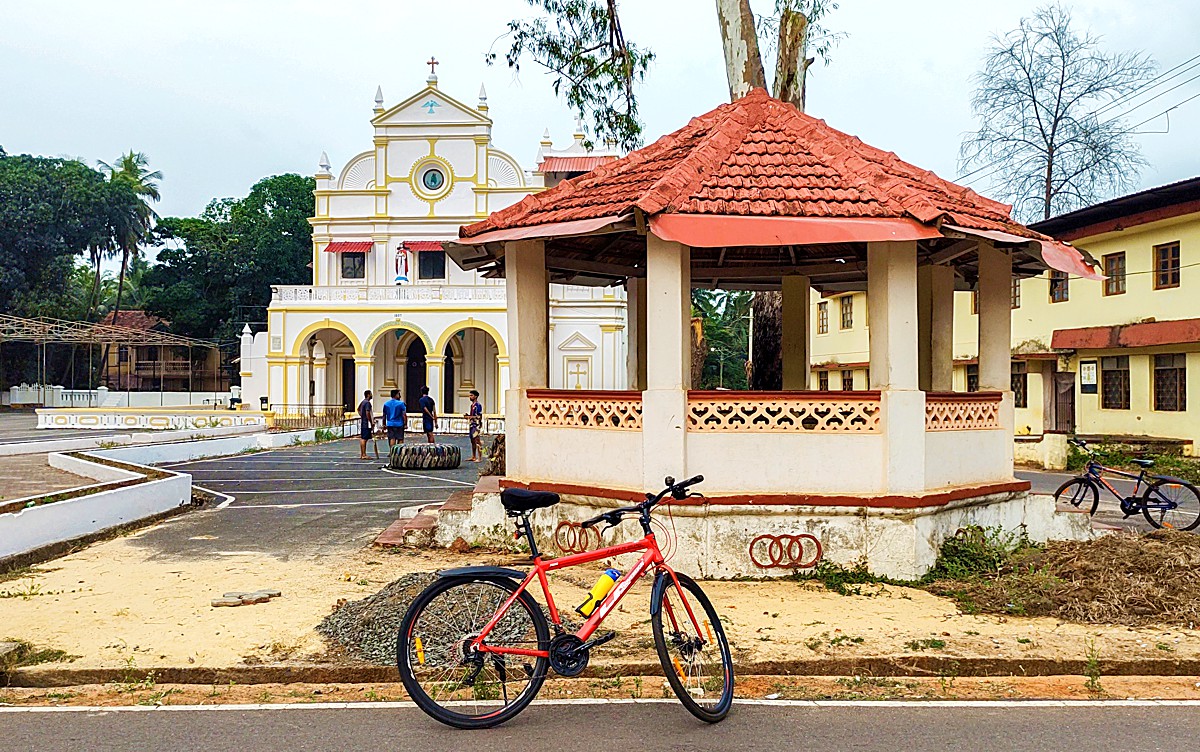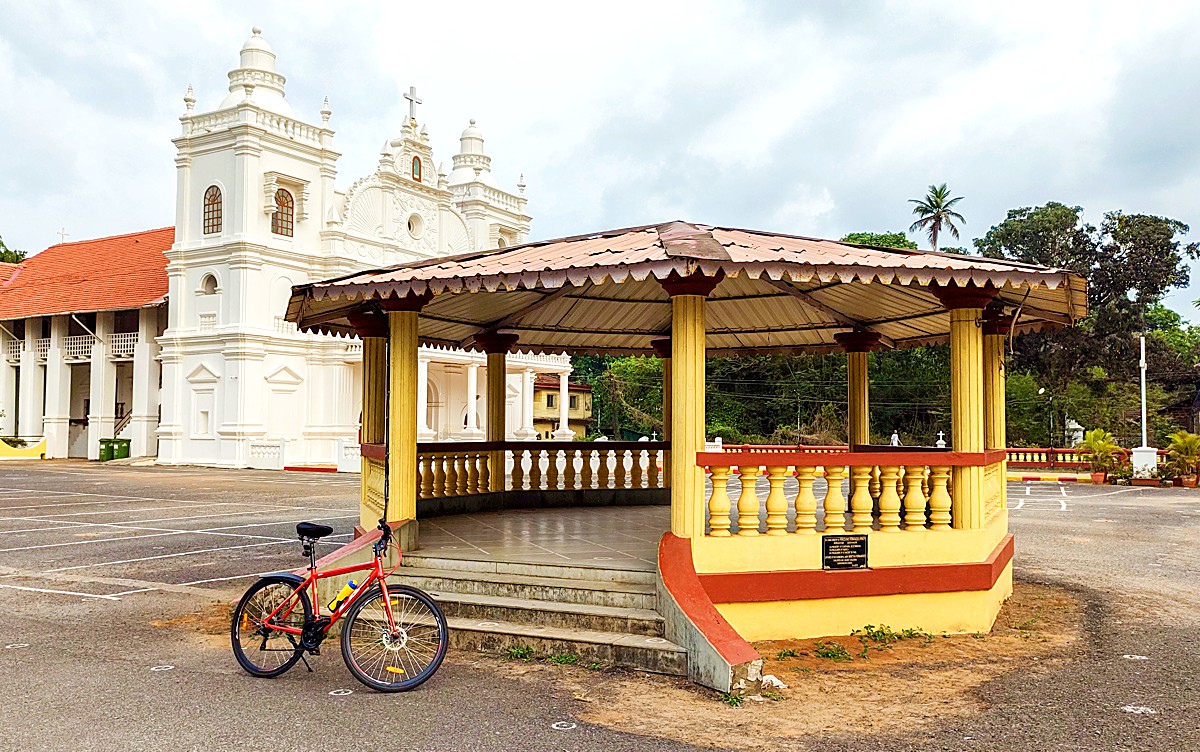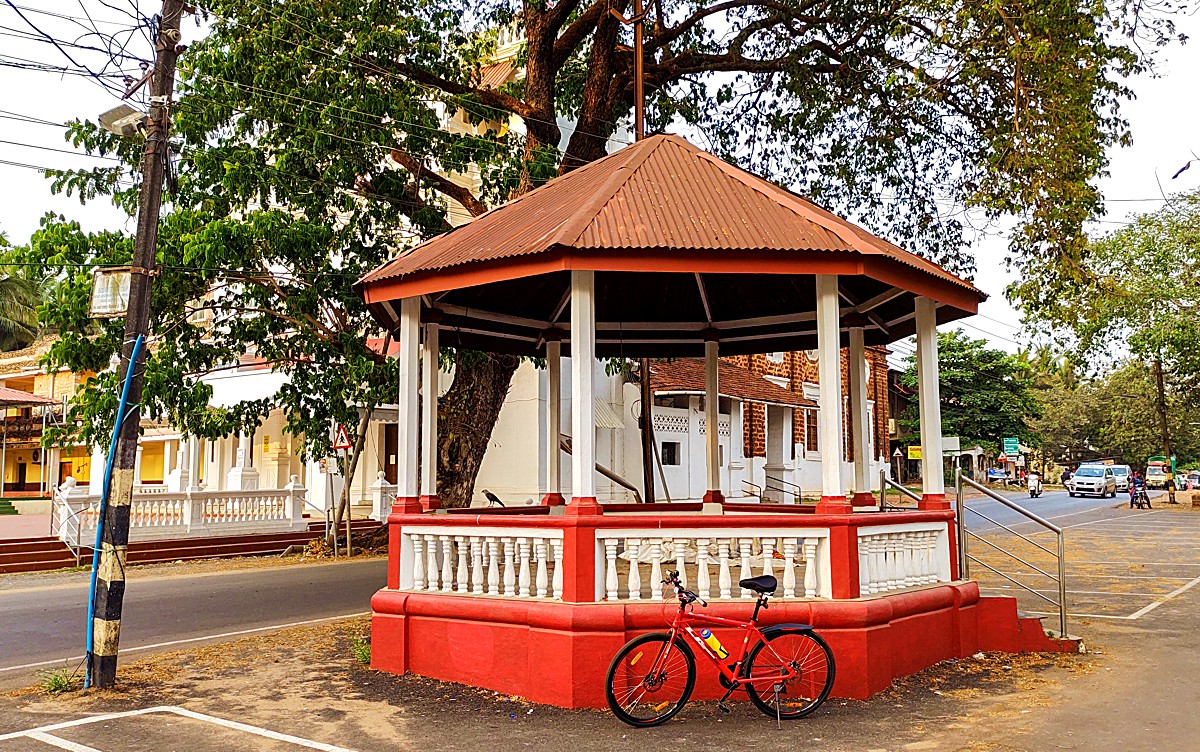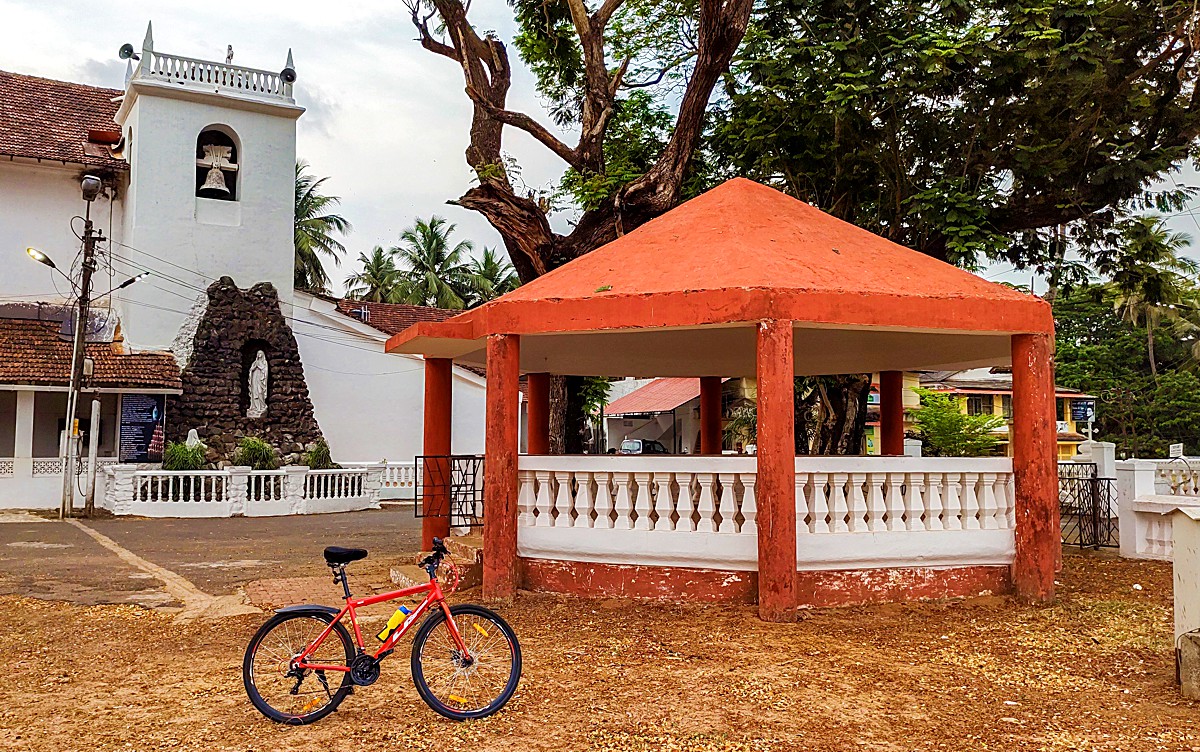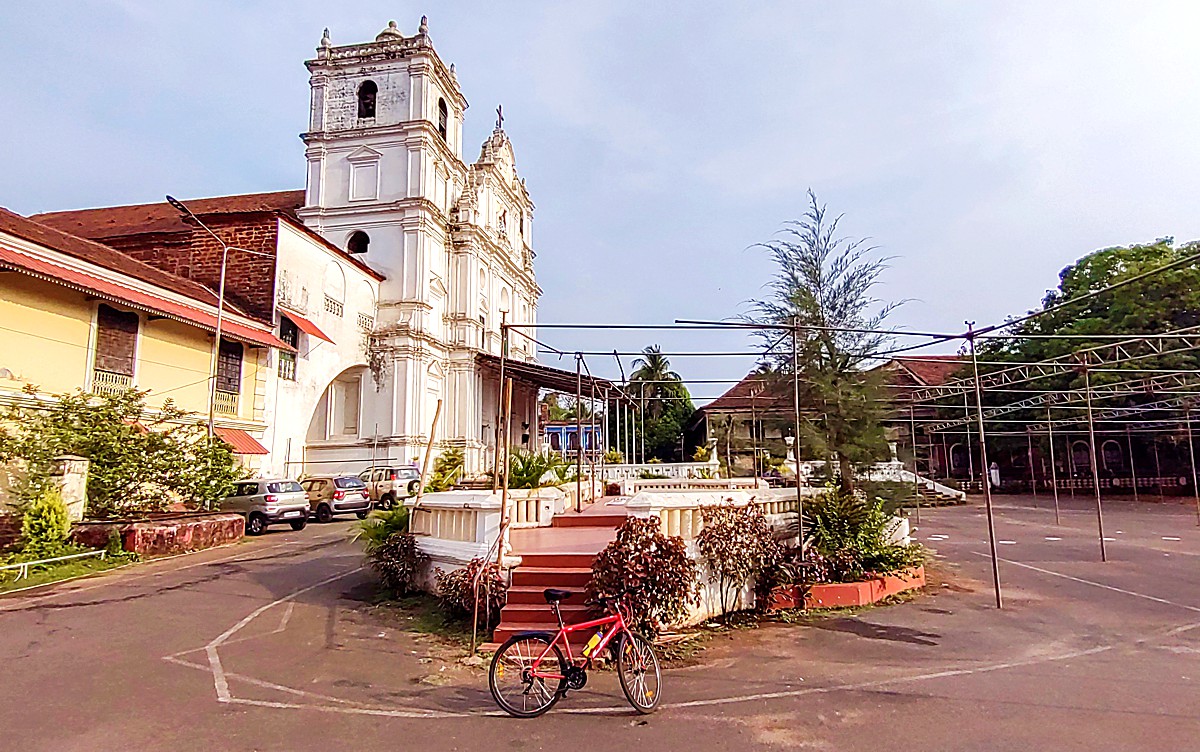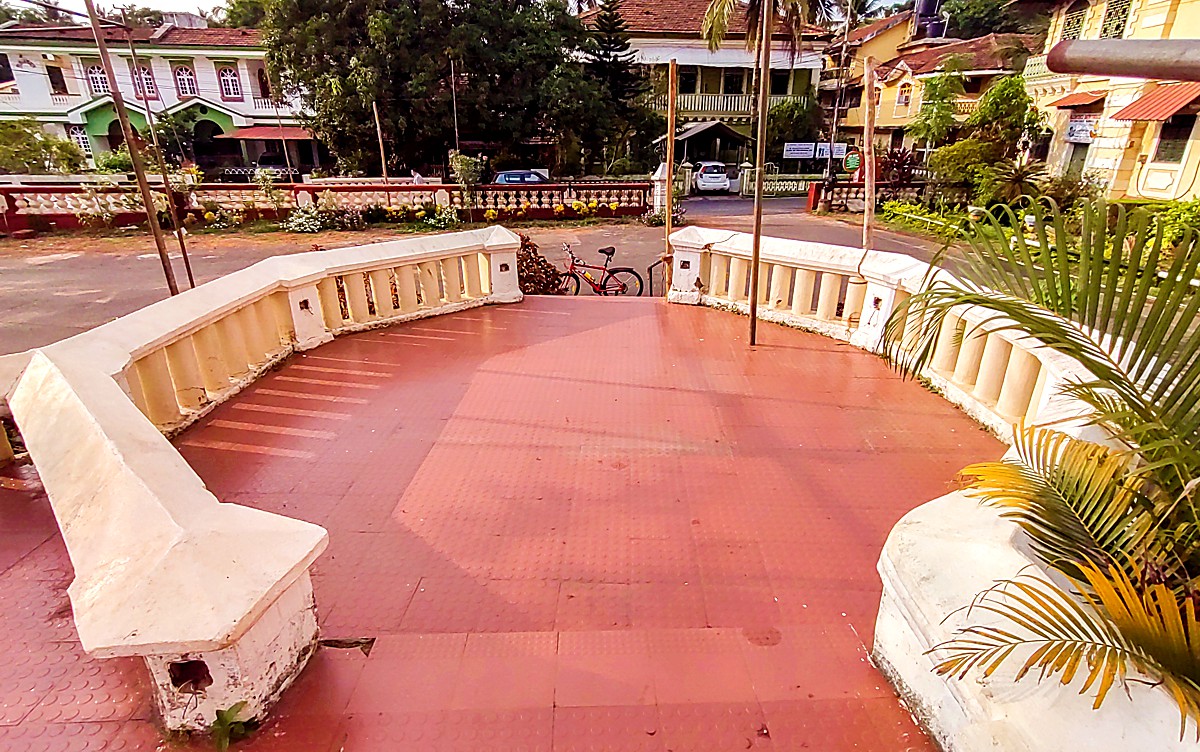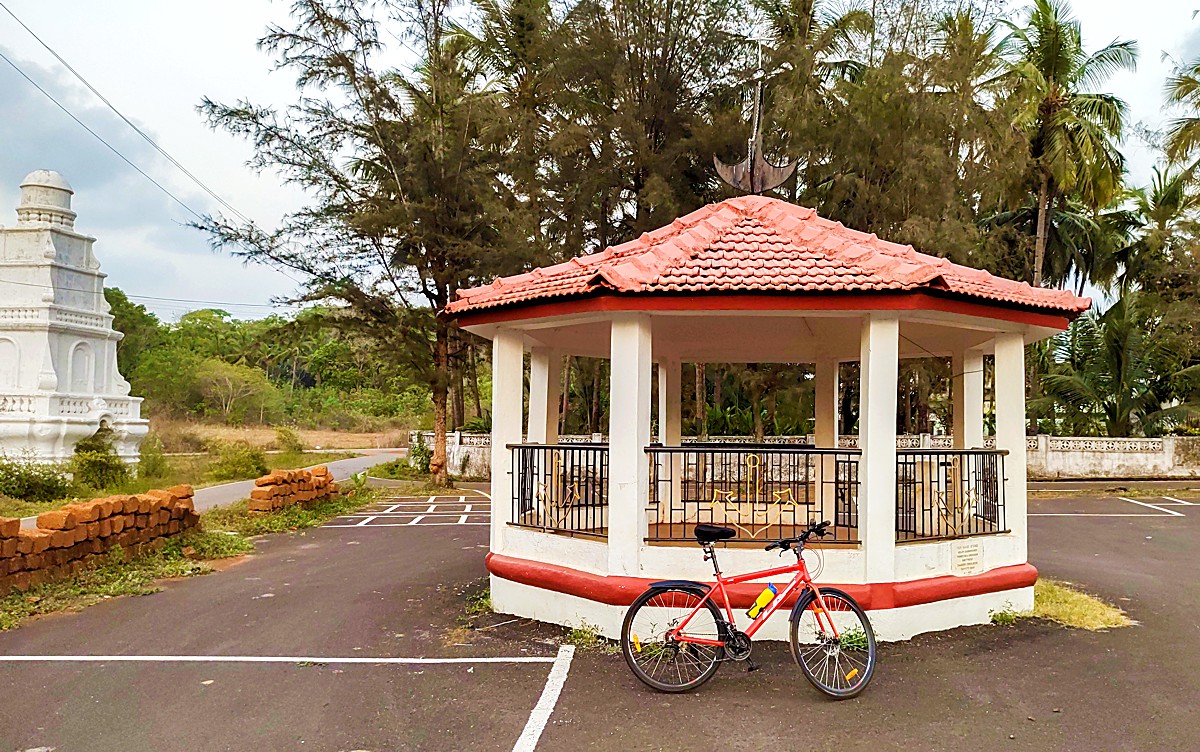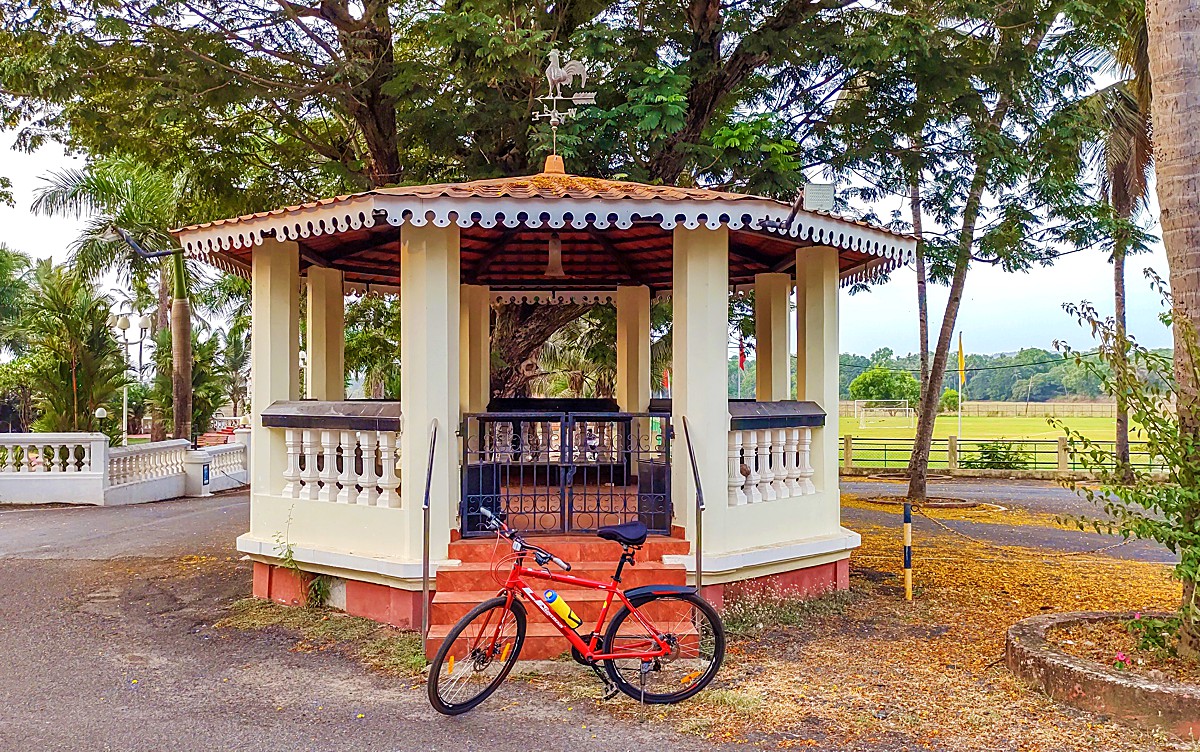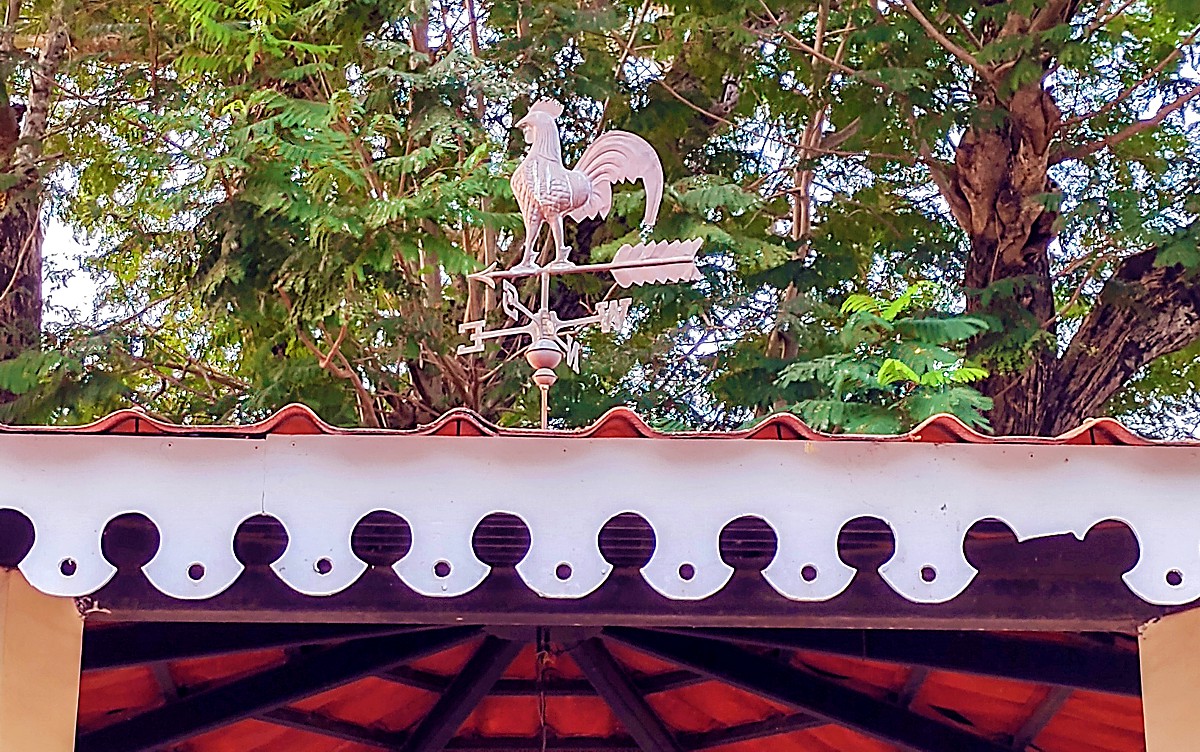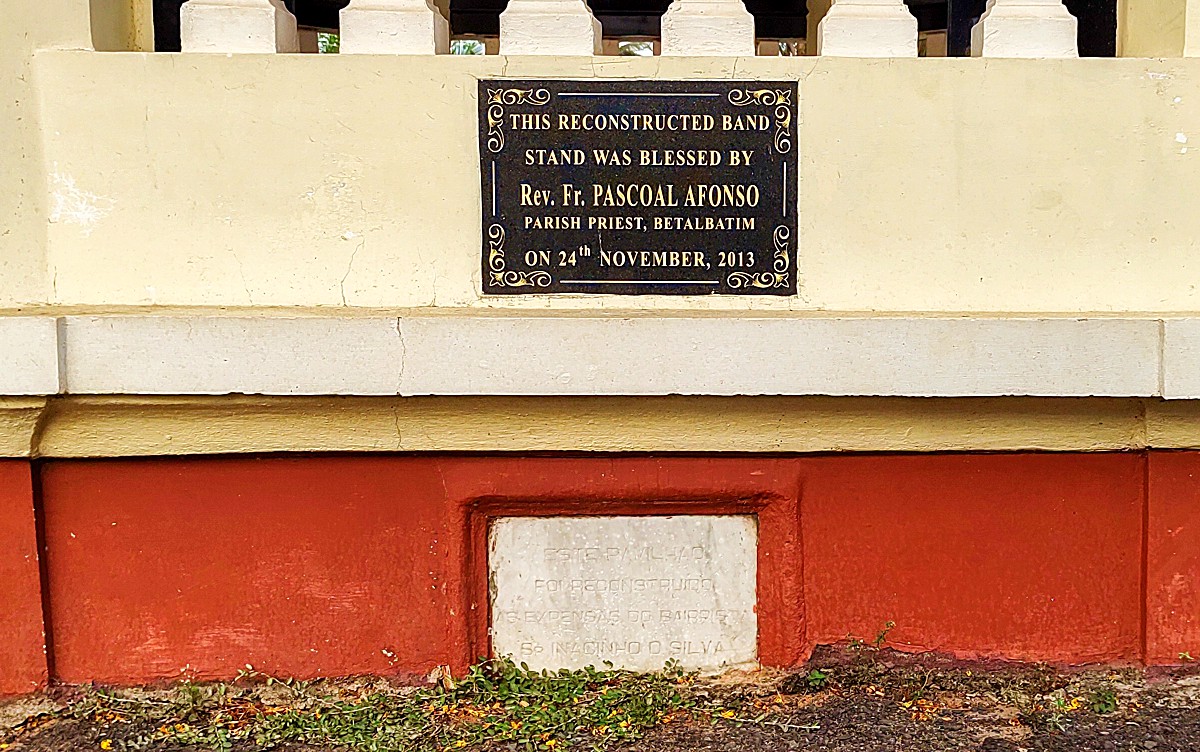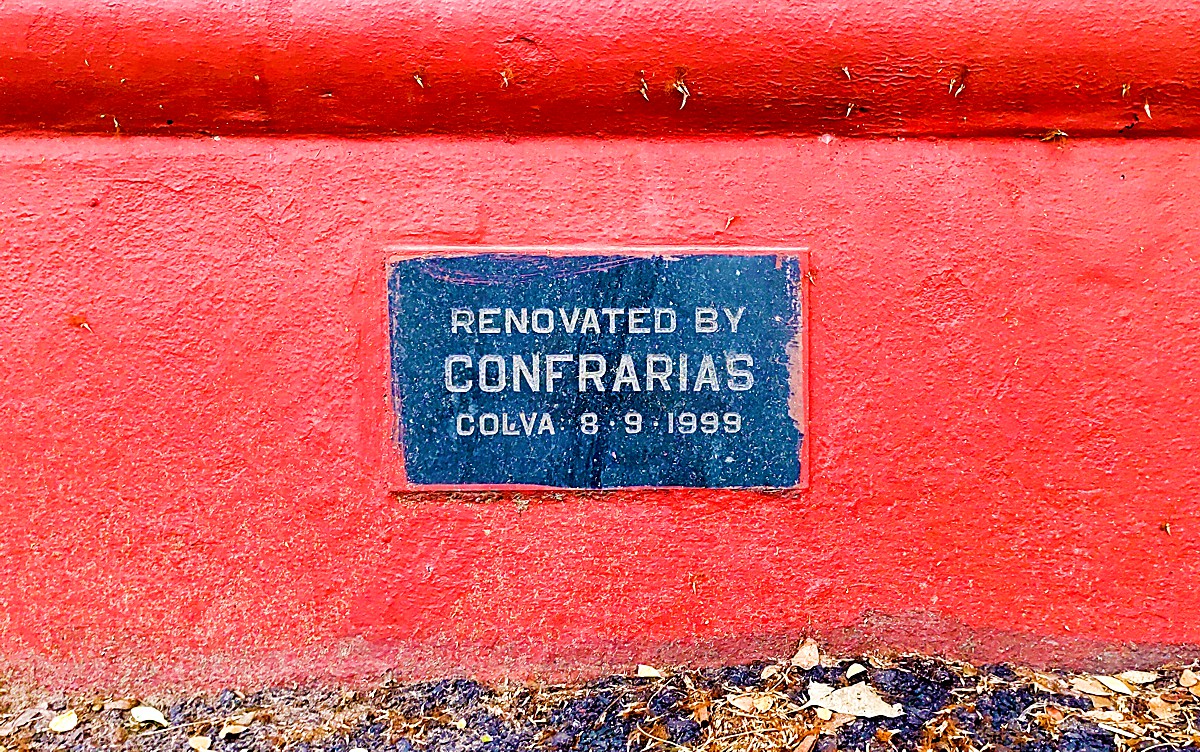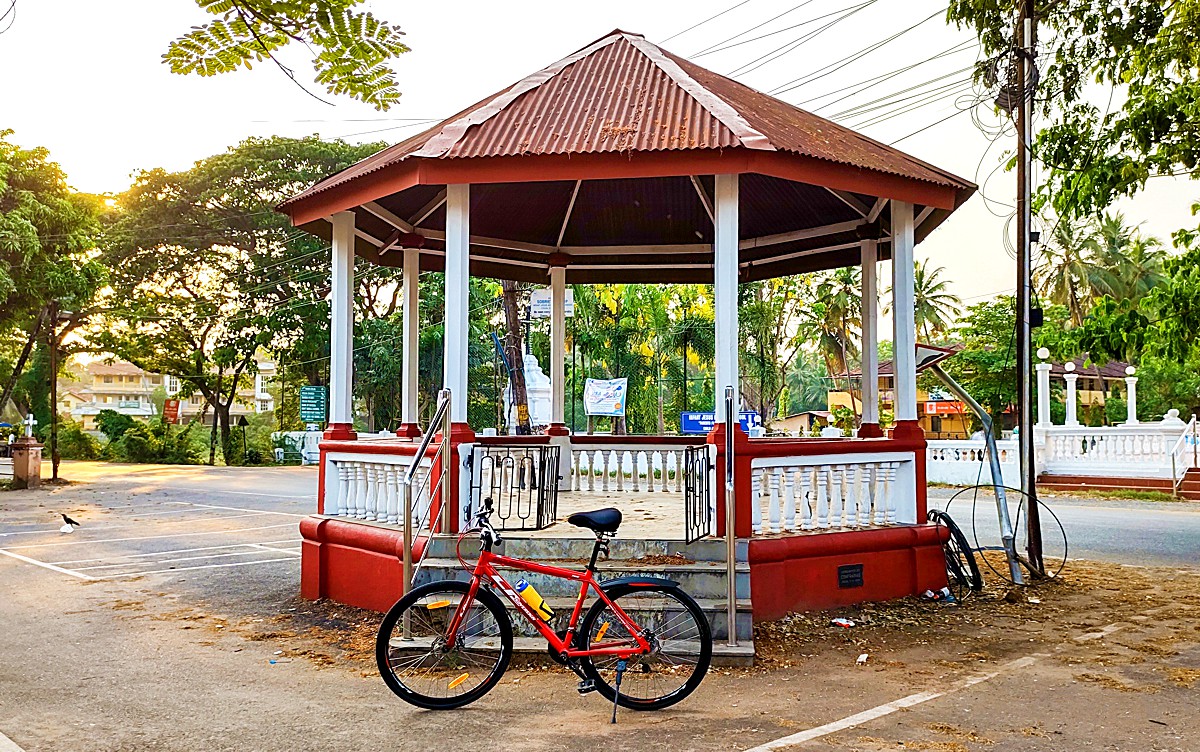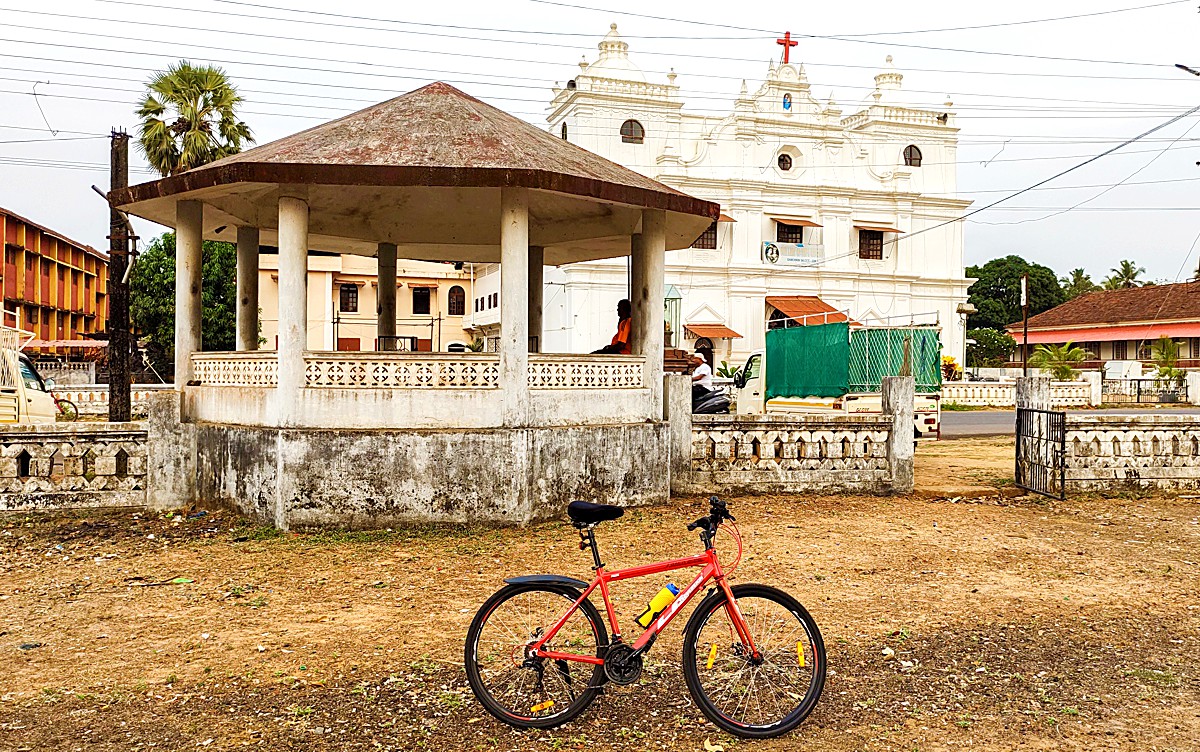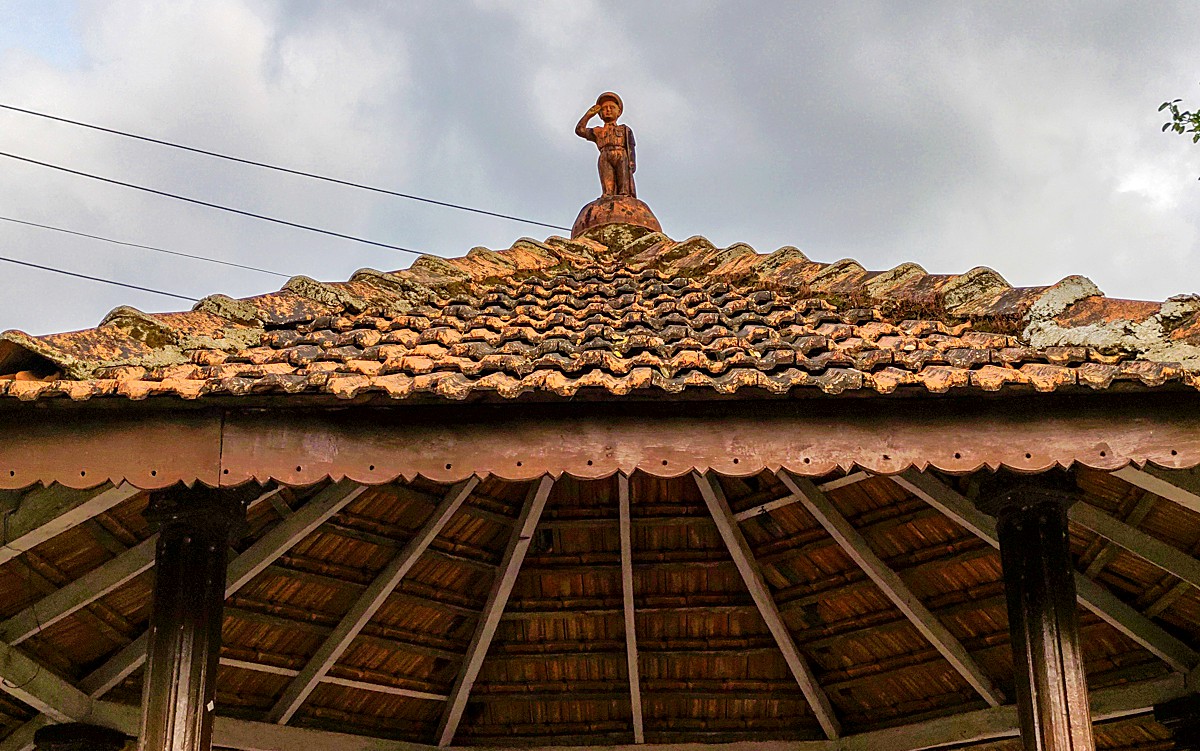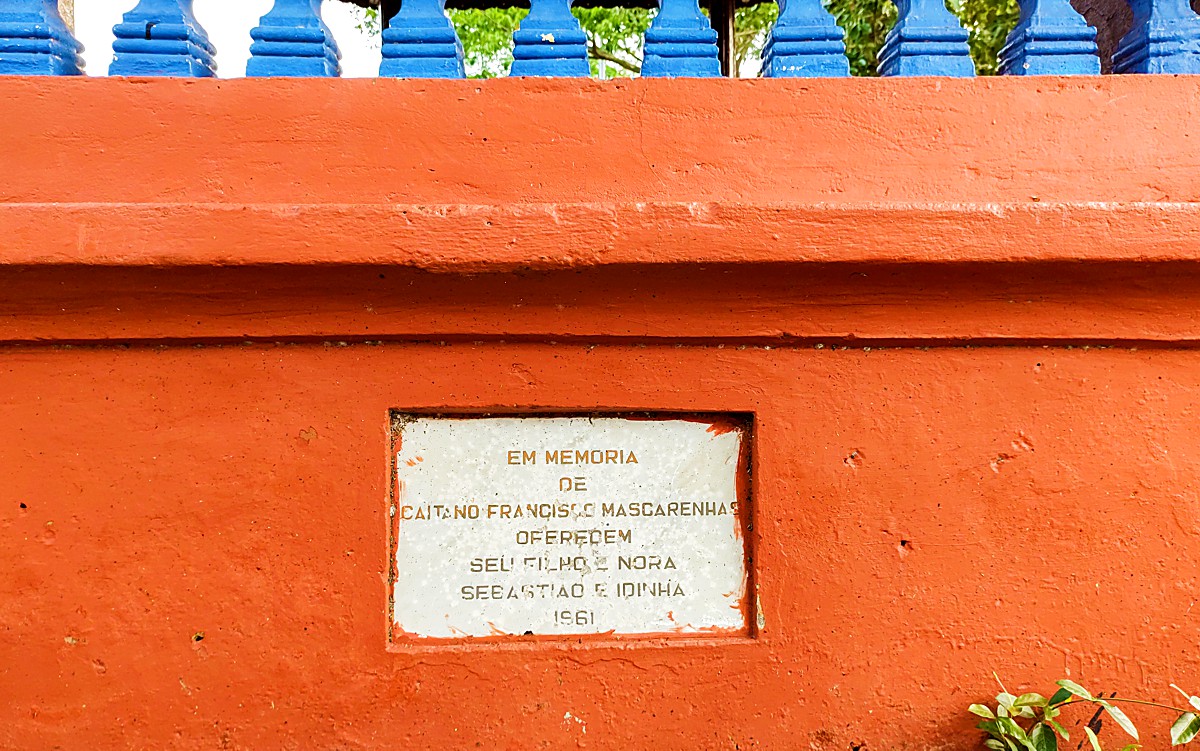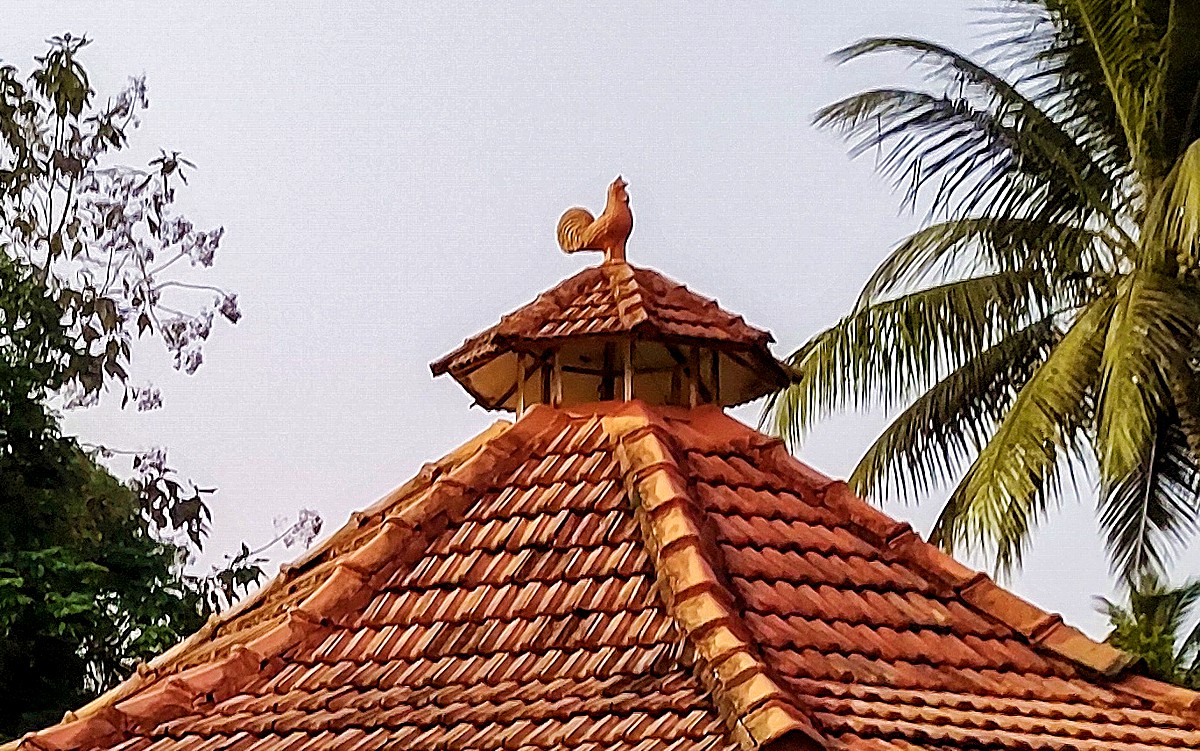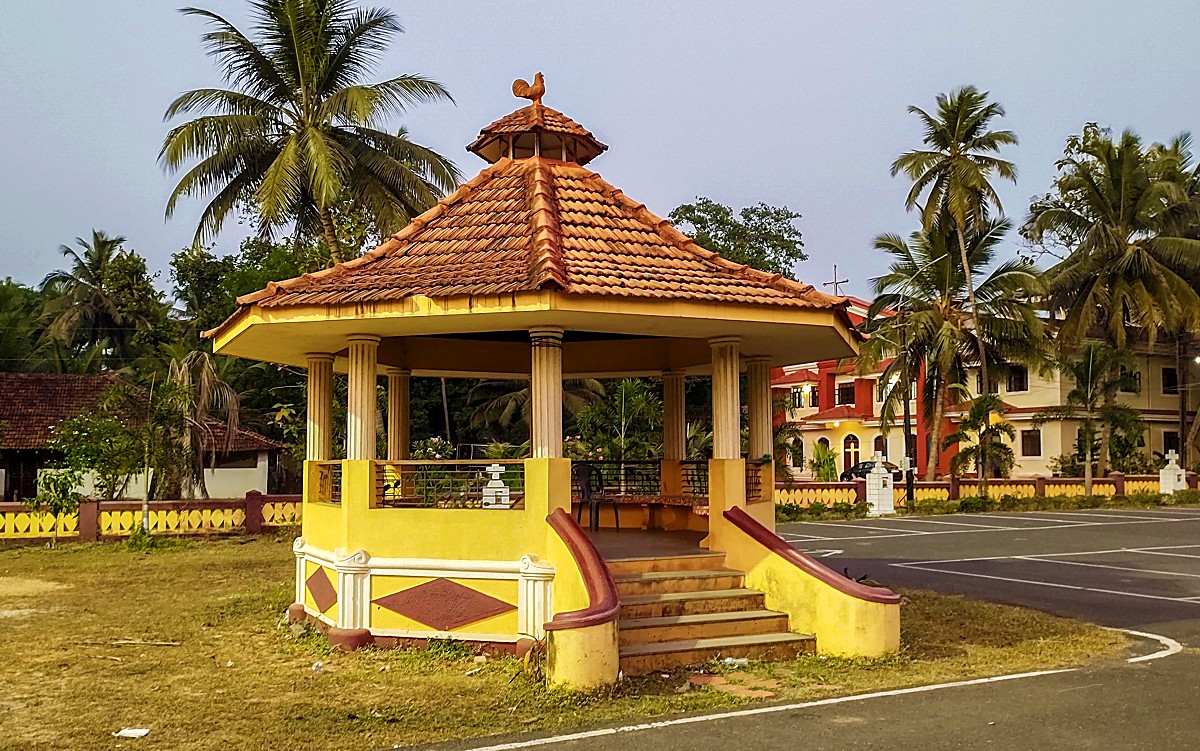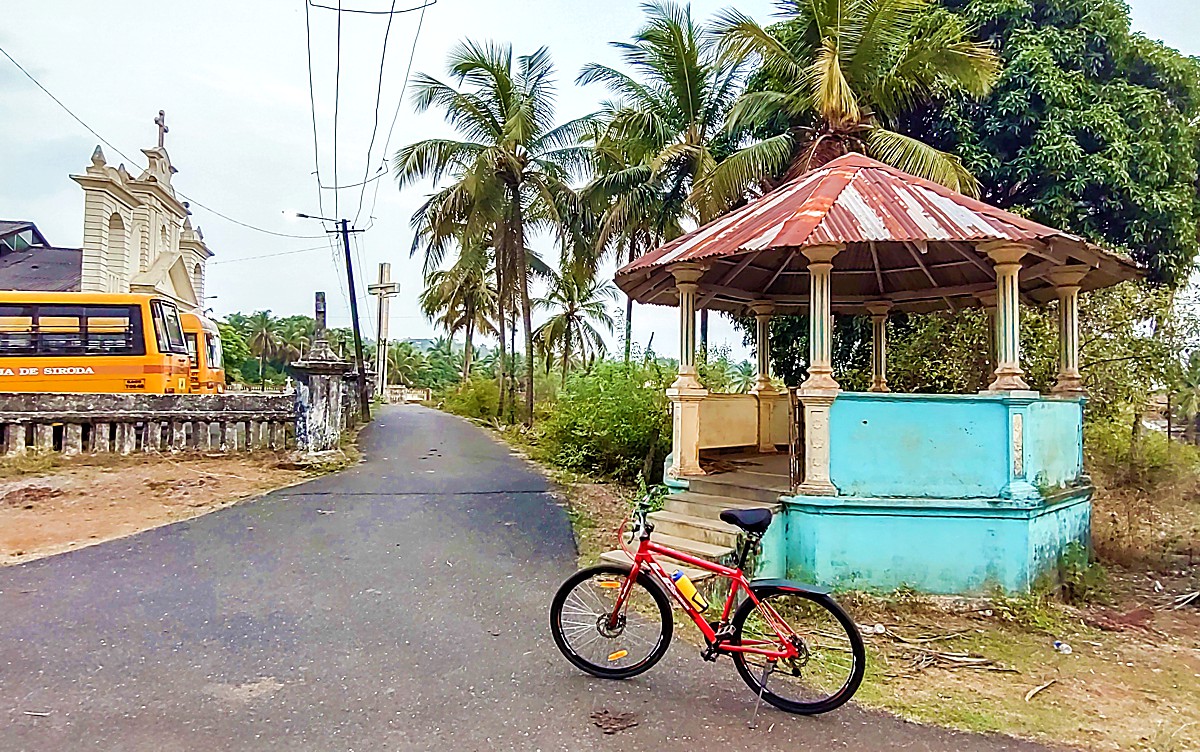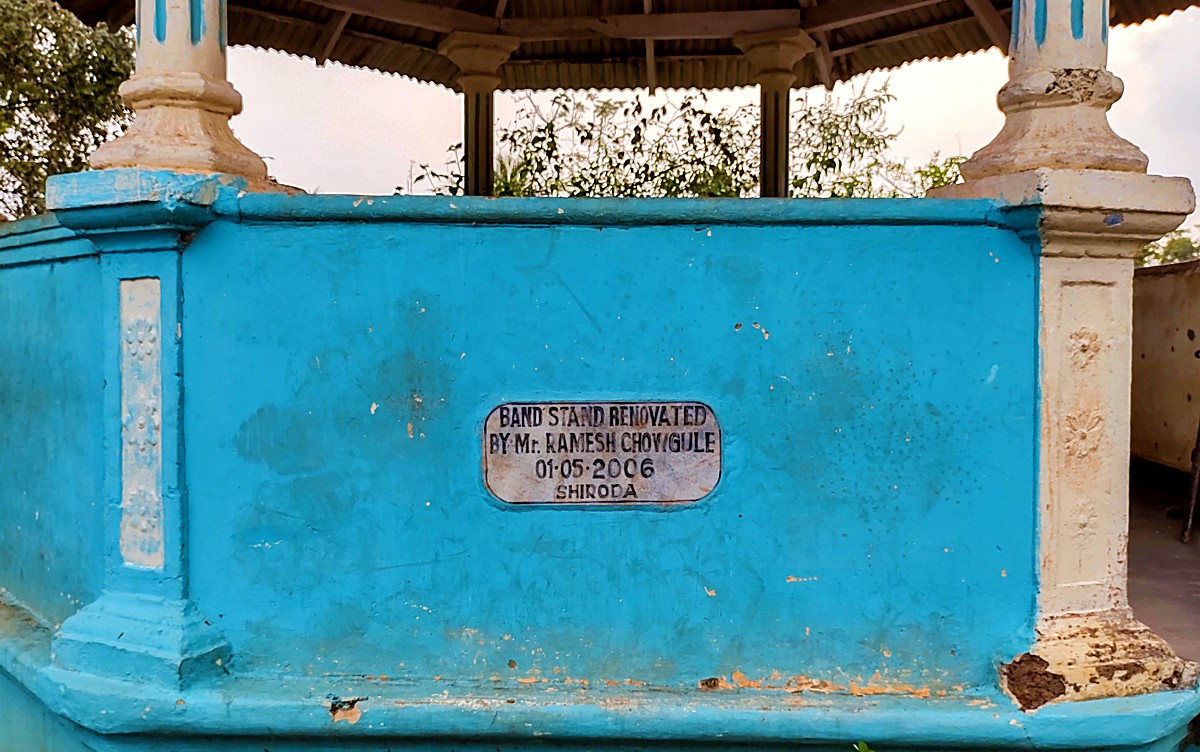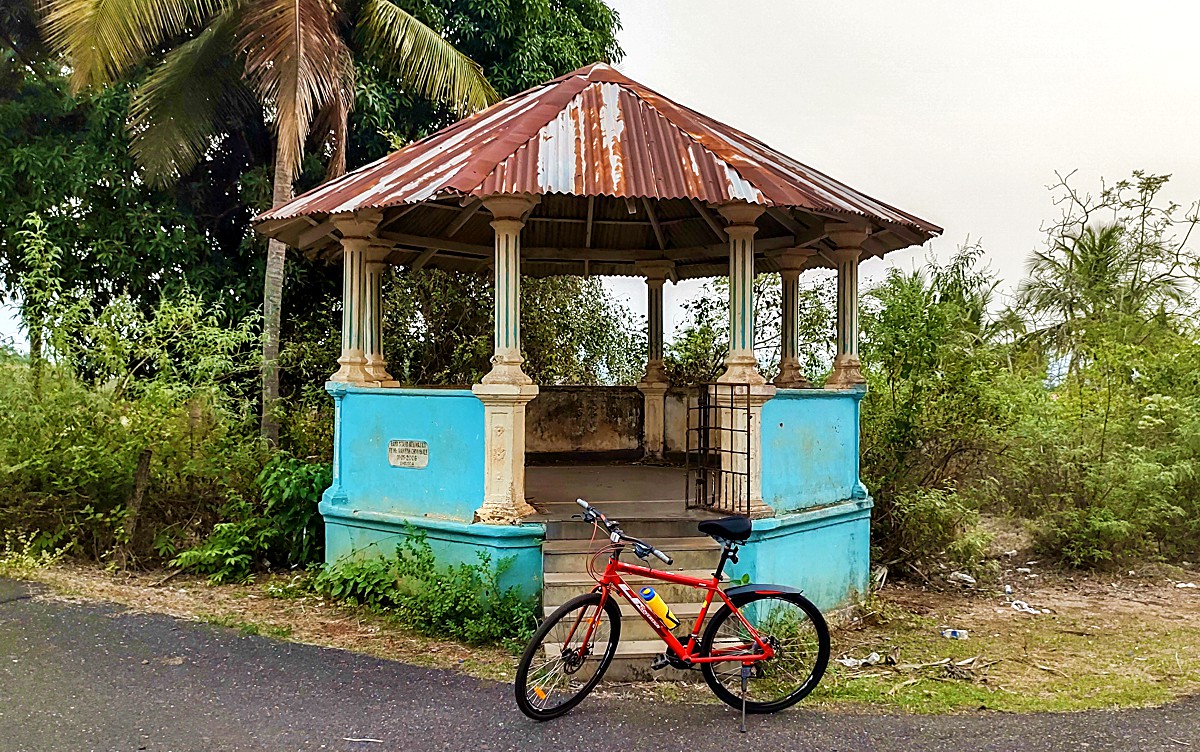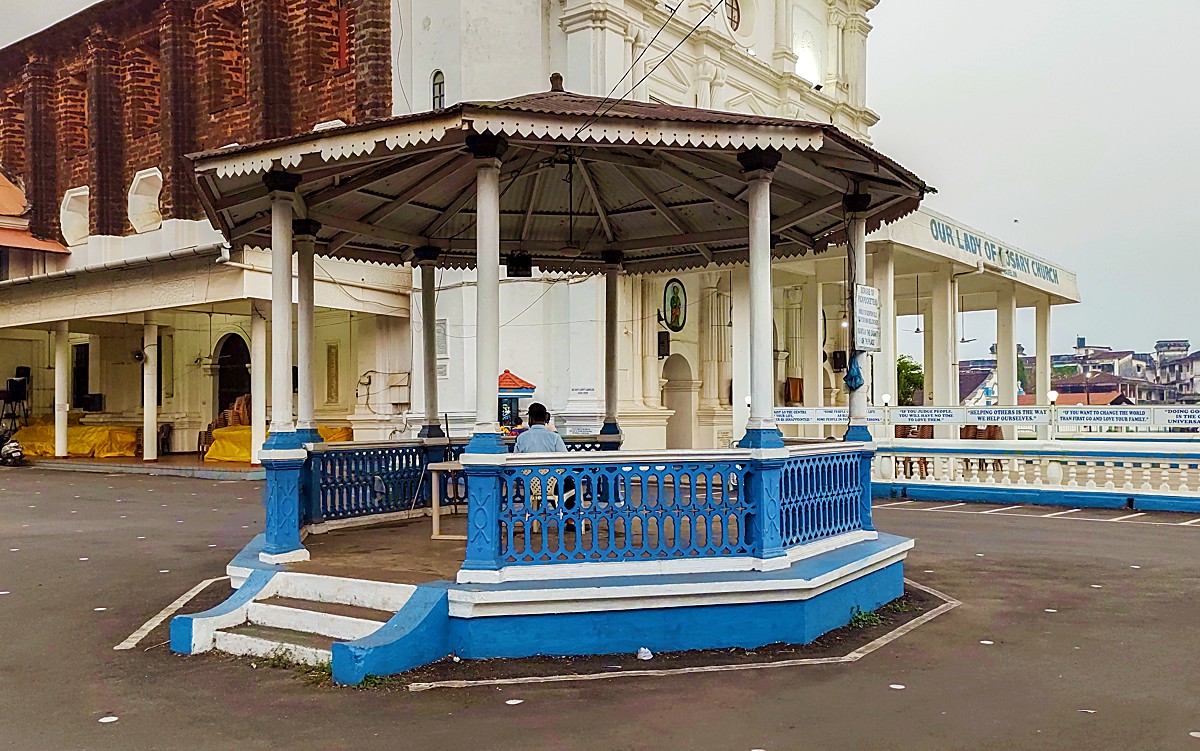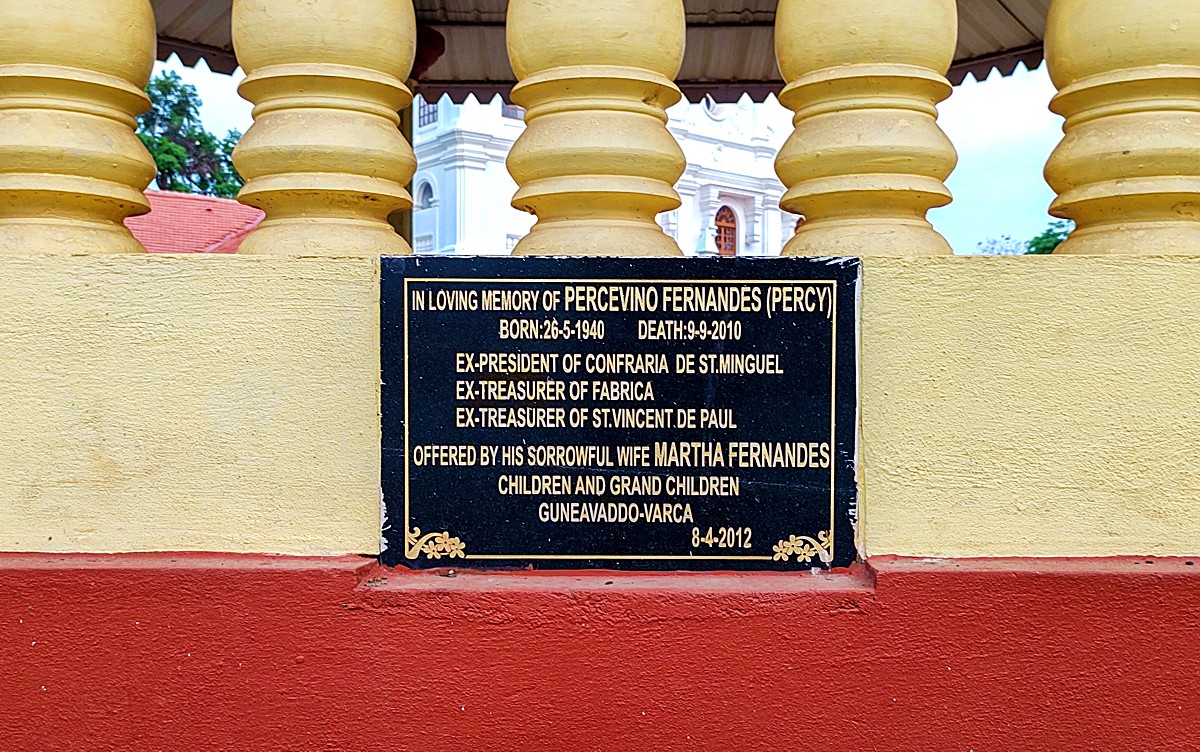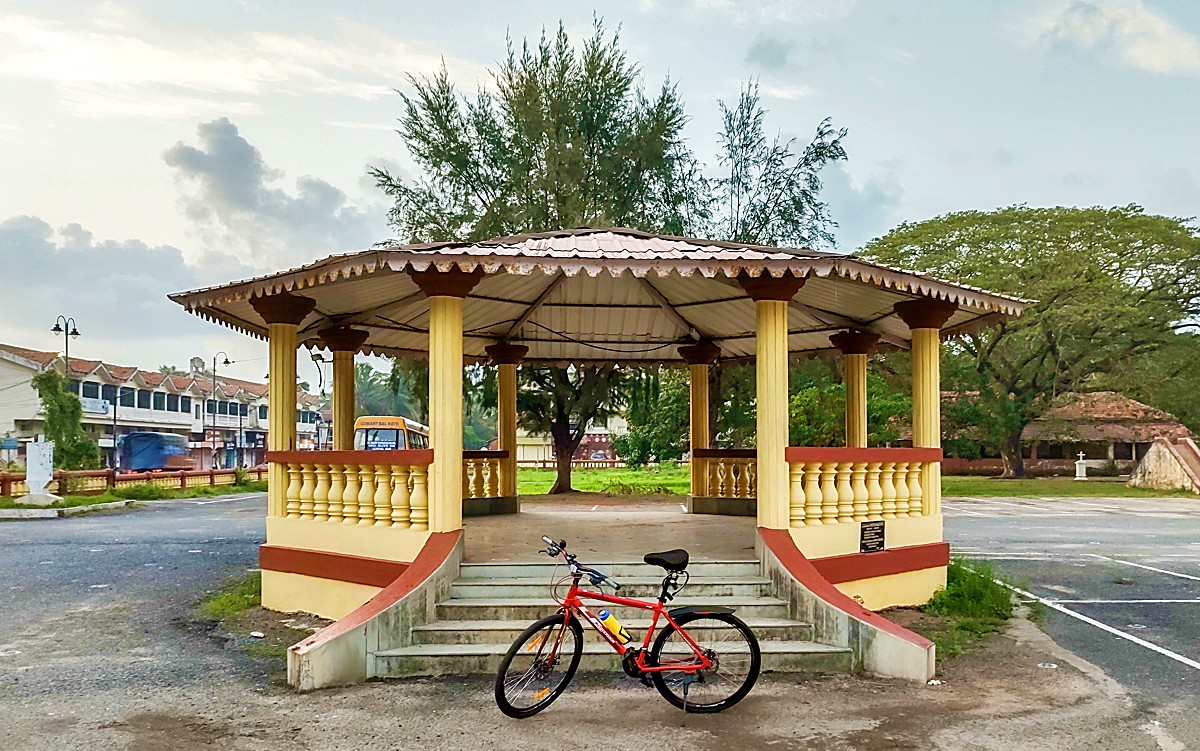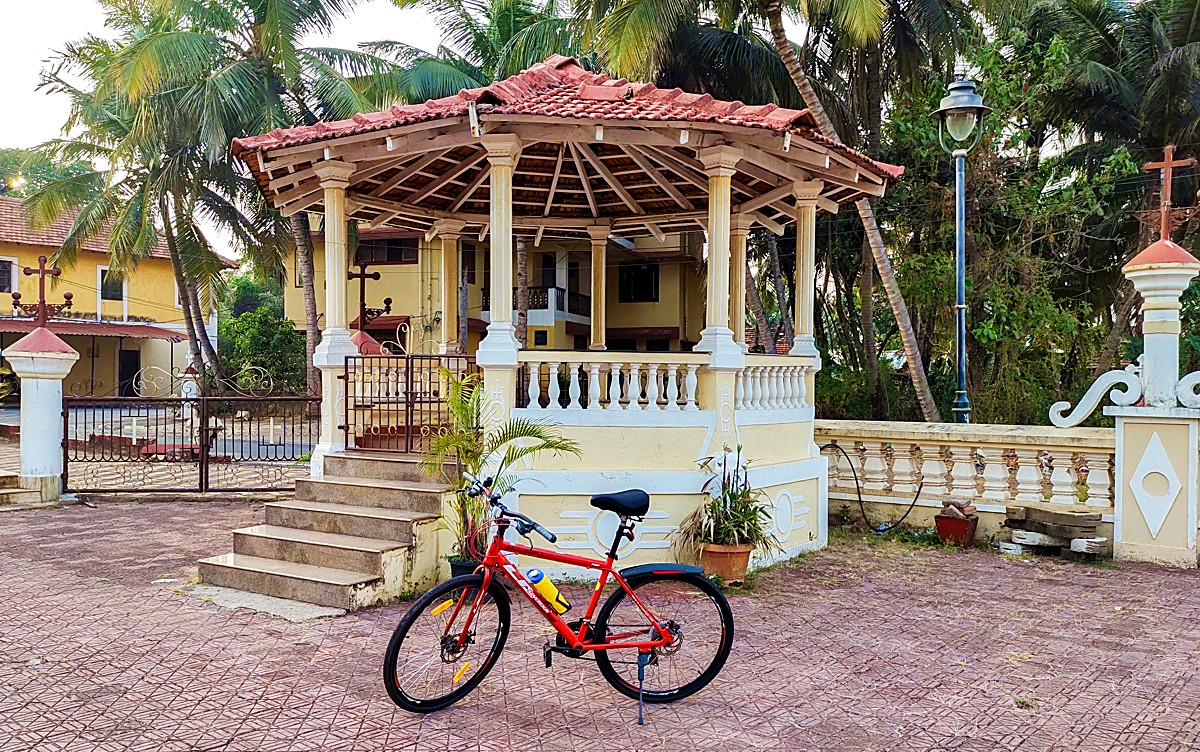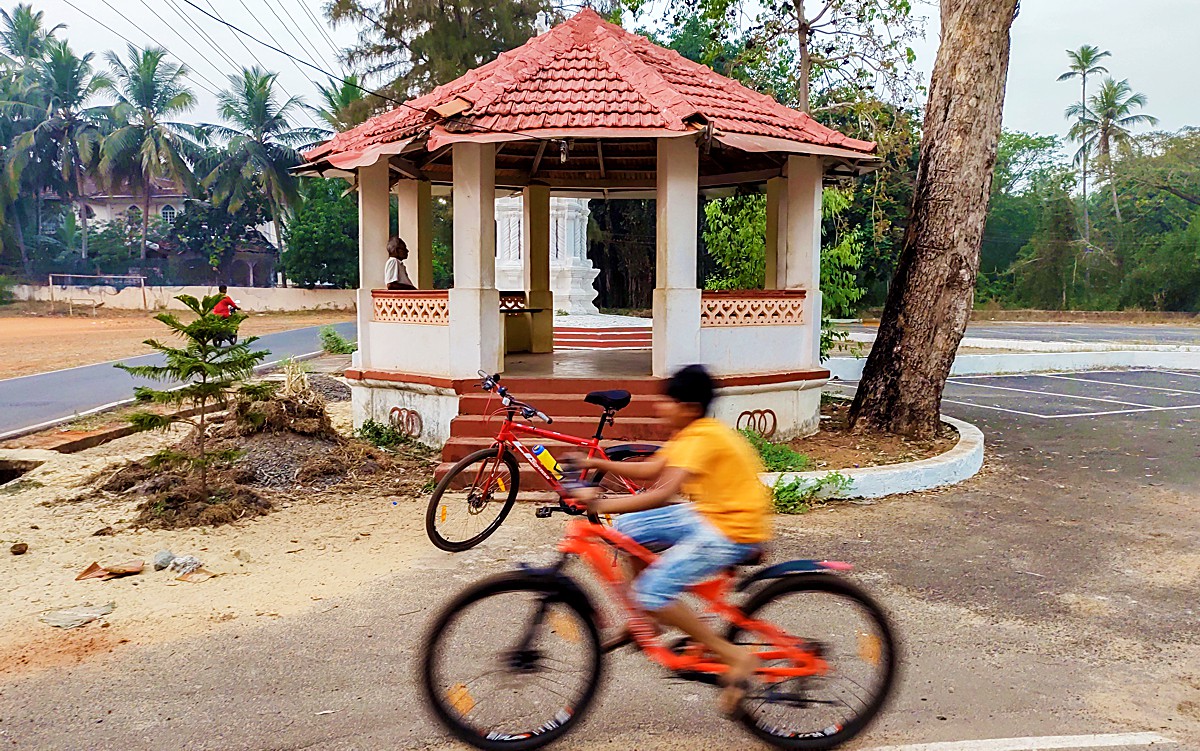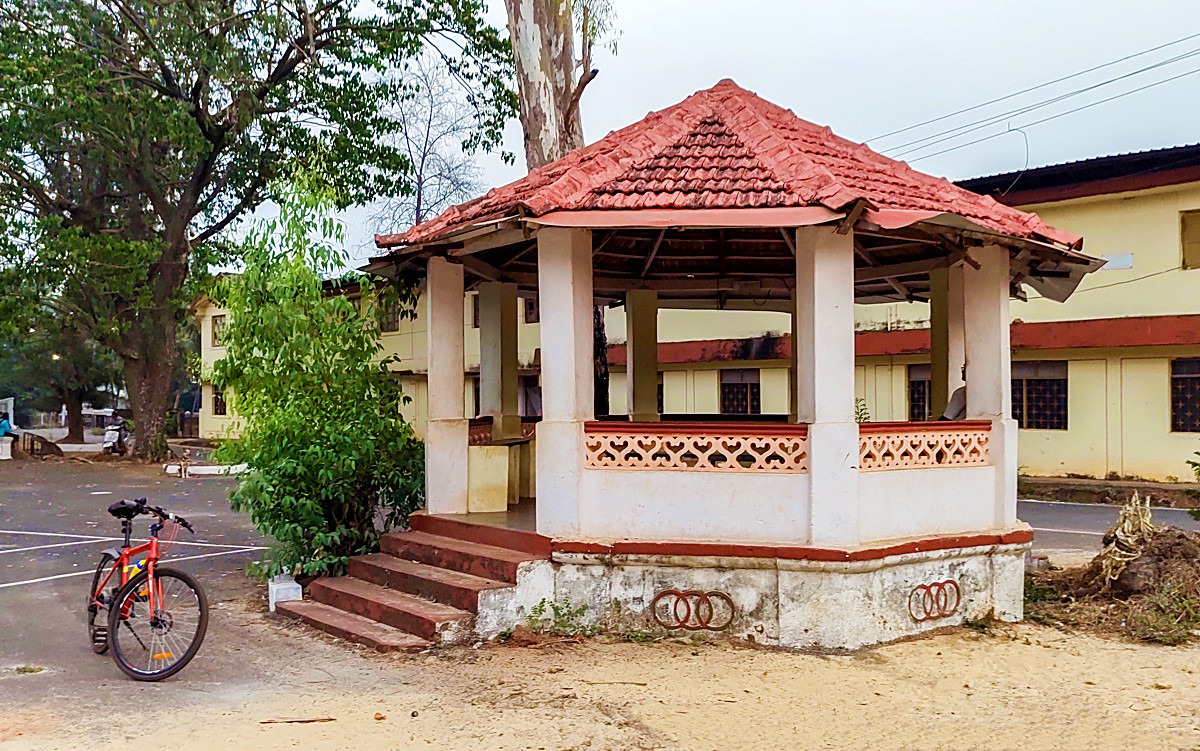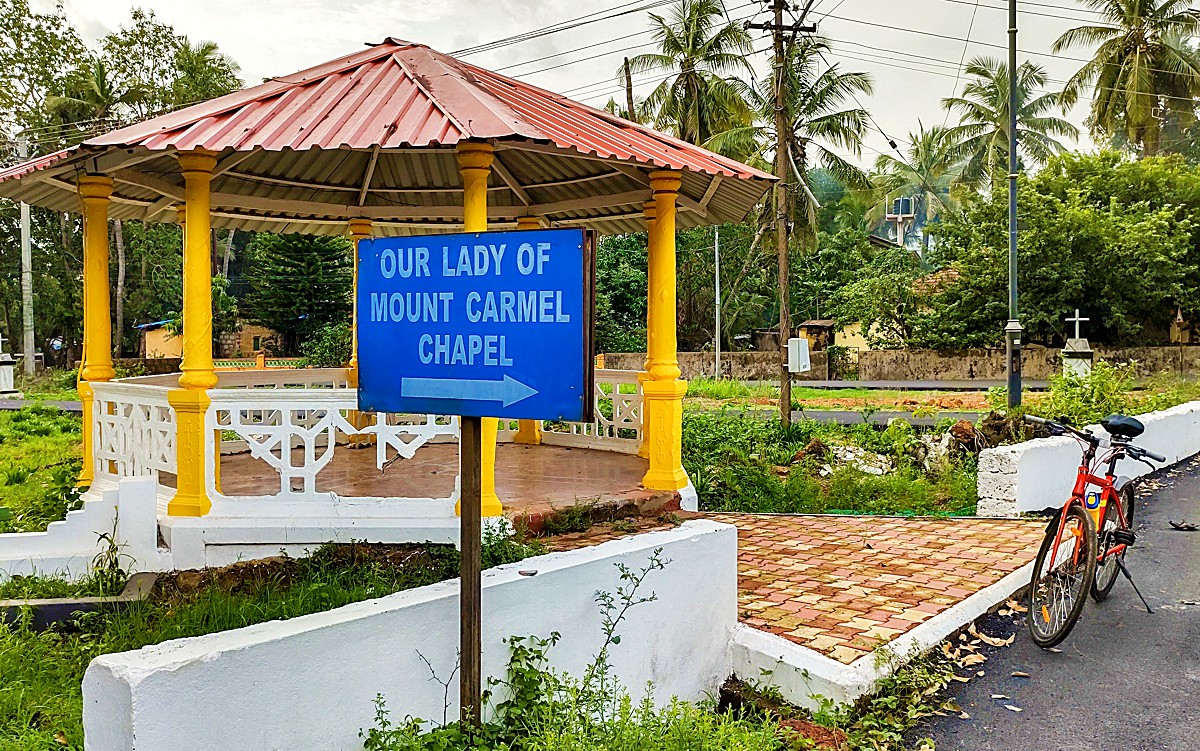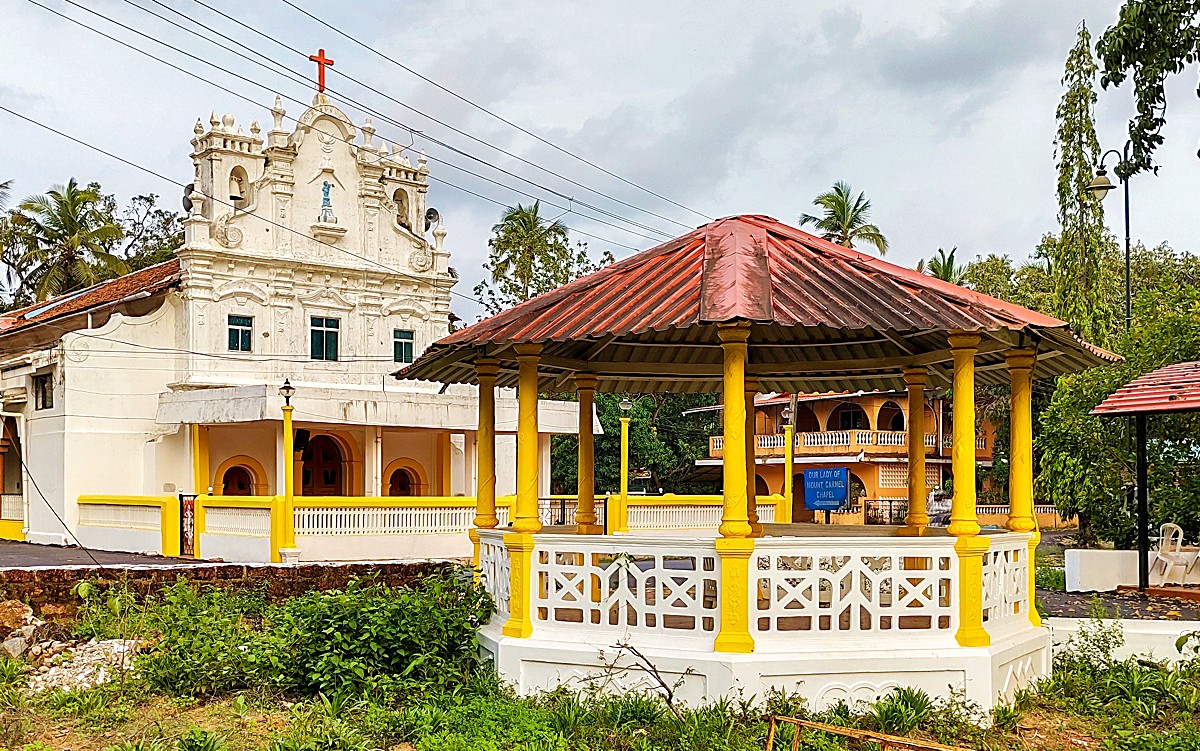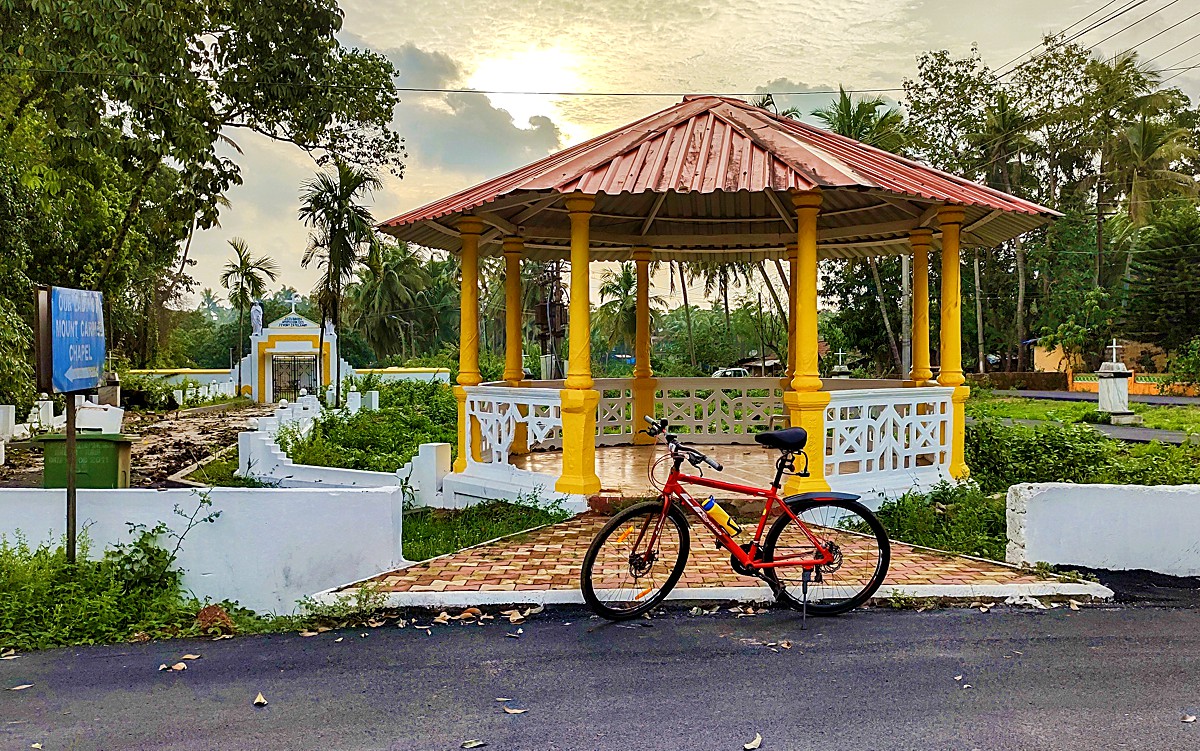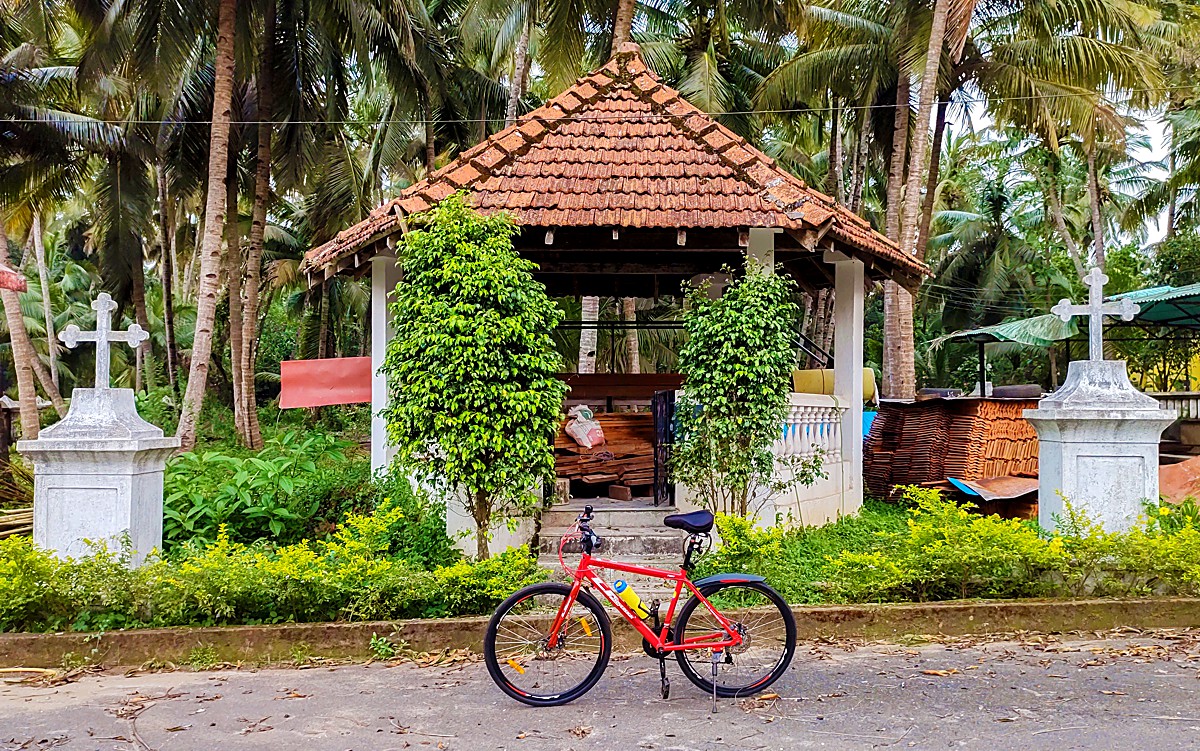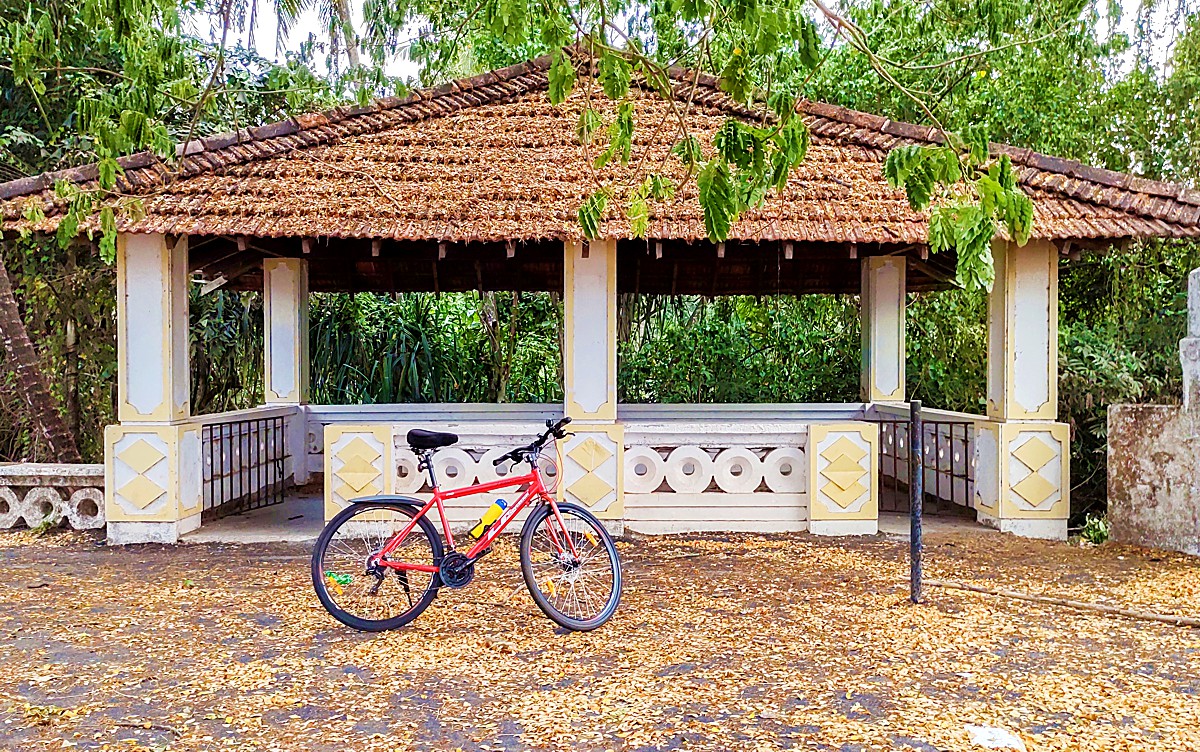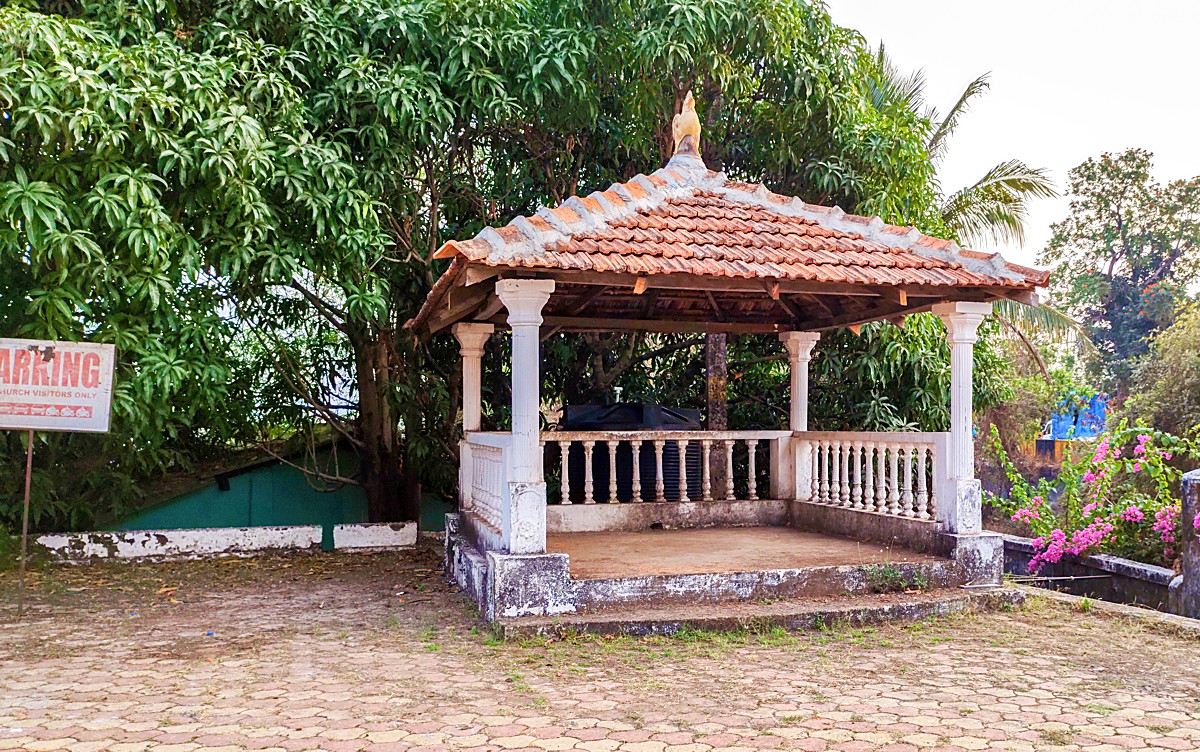Figures of Eight
Why are church bandstands octagonal in shape?
A great attraction of photography is its ability to suspend a moment in time. Since I took up photography as a hobby, I have been documenting “my Goa” and, over the last year that I have started cycling, the easy pace has allowed me to stop and photograph things that catch my eye as I ride by. Among these sights have been church bandstands. In photographing them, something I noticed that intrigued me was the shape – they are all octagonal, that is, eight-sided.
I started wondering why that is so, and decided to ask people who might know. The responses were enlightening. I am listing some of them verbatim here.
Rev Fr. Joaquim De Loiola Pereira: This is the “theological” explanation that Fr Romeo Monteiro gave when I asked him. In the history of the church, 8 is the number associated with the resurrection & consequently of our baptism. Christ rose & appeared to his disciples on the very day & then 8th days later. Many ancient church structures, especially the baptismal fonts/pools have 8 sides. In music, the scale is made of 8 notes.
Architect Ian Karl Alvares: …firstly, it would be more of creating a structure of interest with multiple facets and points of entry rather than just having a square where one’s limitations are to the minimum. Secondly, as it was used for music or maybe even speeches it could because of the amplification or acoustical properties of the conical roof and thus became a standard feature. Finally, as it symbolises resurrection……
While Architect Sunil Sardesai agreed with the above, he said it could also be due to people’s belief in Vastu: Vedic Vastu is a natural law based architecture. Many ancient structures including religious worship places are based on orientation principle of Vastu. Pyramids are a true example of orientation. Five important elements of Vastu shastra – Fire, Water, Earth, Air / Wind and Space are mutually related to the four cardinal Directions – North, South, East, and West, and four inter-cardinal directions – NE, SE, SW, NW, of the compass. Each Vastu direction is associated with an element and a different area of ones life. In the olden day’s people who needed to check the directions, used to see the shadow of the sun and the octagonal shape made things a bit easy as a ready compass.
Do you have a different view about these unique octagonal shape bandstands??? Please let me know.
A brief history of bandstands
I also tried some research of my own, and came across a lot of interesting information about bandstands.
Gazebo-like structures have been around for centuries. They first appeared in Egyptian gardens some 5,000 years ago, built in gardens to support grapes for wine and raisins. The Egyptians believed that these earthly paradises – gazebos and gardens – would follow them to heaven. Similar structures also appear in the literature of China, Persia, and other classical civilisations.
The Greeks built temples in public spaces that were surrounded by gardens, with marble gazebos in memory of gods and goddesses. The Romans enjoyed their private gardens as places to relax and entertain. Garden gazebos were constructed as pleasing outdoor features used as gathering places.
As architectural features, gazebos overlap with several other structures under different names, such as pavilions, kiosks, alhambras, belvederes, follies, gloriettes, pergolas, rotundas, tea-houses and bandstands.
A bandstand is a simple covered elevated structure, usually built of wood or metal, with built-in seating inside the sheltered area, that allows the public to stand around it, listening to the performances of musical groups.
The history of the bandstand in Europe started in the late 18th century, when ephemeral structures were put up for seasonal festivities and important events. Whether it was at a popular celebration like a fair or a feast, or an official event like a visit of a head of state, a commemoration, or an exhibition, the bandstands were a big draw.
Politicians and patrons supported the culture in public spaces, promoting new leisure activities, education and social equality. Music had a fundamental role in this aim, and started becoming a feature of all types of events.
While the bands performed in the bandstands, the public didn’t have any conventions. On the street, they could be sitting down or standing, dancing or walking around. The bands, military or philharmonic, would play their adaptations of classical music, for everyone to listen to.
The decline of the bandstand, which started in the middle of the 20th century, is related to the emergence of radio and later, of television. These new means of communication and different ways of listening to music provided a more private environment for the pastime.
Bandstands in Goa
In Goa, the church bandstands were usually used for performances by brass bands on the occasions of novenas and feasts. On many bandstands, I have found plaques mentioning when and by whom they were reconstructed, but unfortunately no construction dates. Let me know if you know when they were built.
1. Holy Spirit Church, Margao
The church, founded by the Jesuits in 1564 was however destroyed many times before the present structure was built in 1675.
This bandstand was probably built after 1910, as it is not there in the photo (b&w – r) clicked by Paul and Souza Photographers, circa 1910. It is the only one, among the 17 bandstands that I have seen in South Goa that does not have a roof.
2. Nossa Senhora de Belem Church, Chandor
The Communidades of Chandor, Cavorim and Guirdolim, the components of the parish, jointly built the Nossa Senhora de Belem Church in 1645. The frontispiece of the church had collapsed on 14th August 1949. It was reconstructed the following year in Neo-Gothic style.
The bandstand donated by the seafarer community of Chandor has an anchor on the roof and the grills have an anchor design on them.
The marble plaque on the bandstand reads, in Konkani: “HEM BAND STAND BELEM SAIBINNICHEM PORBECHEA UGDDASAK BHETTOITAT CHANDOR FIRGOJECHE TARVOTTI BHAV 6.1.1995”.
3. Our Lady of Remedios Church, Betalbatim
The church, founded by the Jesuits in 1630 was raised to the rank of a parish church by the order of the administrator of the Archdiocese (the Bishop of Cochin), dated April 24, 1635. The church was rebuilt in 1807.
The church bandstand was reconstructed in 2013 and has a weathercock on the roof.
A two marble plaque on the bandstand reads, in Portuguese: “PAVILHAO OFERECIDO PELOS BAIRRISTAS DE NAGVADDO” translating to “Pavilion offered by the neighborhoods of Nagvaddo”
and “ESTE PAVILHAO FOI RECONSTRUIDO AS EXPENSAS DO BAIRRISTA SR INACINHO D SILVA” translating to “The expenses for reconstruction of this pavilion was paid by Bairrista Sr Inacinho D Silva”
4. Our Lady of Merces Church, Colva
Originally built in 1630 as a chapel it was affiliated with the parish of Benaulim. In 1635, the church became a full-fledged parish. Infant Jesus (Menino Jesus de Colva) is venerated in this church with special devotion.
Across the road from the church, this bandstand was renovated by the Confrarias in 1999.
5. Our Lady of Hope Church, Chinchinim
The church was built by the Jesuits in 1590, on the day of the first mass at the church, 300 people were baptised during the ceremony. The church was renovated and blessed on 30th April 1888. The grotto of Our Lady of Lourdes in the Church was blessed on 26th December 2000.
The bandstand opposite the church has a concrete roof and seems to be a recent construction
6. Our Lady of Regina Martyrum Church, Assolna
According to the ‘Anuario da Arquidiocese de Goa e Damao’ (1955), the Our Lady of Regina Martyrum Church in Assolna was founded in 1616 on the ruins of a fortress on the banks of the River Sal. On the grounds of the church, there stands a grand monument of Christ the King.
This bandstand also has a concrete roof.
7. Mae de Deus Church, Majorda
The Majorda church was founded in 1588 and was made a parish church during the tenure of Archbishop Aleixo de Menezes. The Church was set on fire by the Marathas in April 1738. However it was soon repaired and rebuilt in 1739.
A Policeman keeps a watch on the faithful from the bandstand roof.
A marble plaque on the bandstand reads, in Portuguese: “EM MEMORIA DE CAITANO FRANCISCO MASCARENHAS OFFEREDEM SEU FILHO E NORA SEBASTIAO E IDINHA 1961” translating to “Offered in memory of Caitano Francisco Mascarenhas by his son and daughter-in-law Sebastiao and Idinha 1961”
8. St. Michael the Archangel Church, Orlim
According to oral history, the Gospel was brought to Orlim by Fr. Pero Mascarenhas and Brother Manuel Gomes, who were the first Jesuit missionaries to enter Salcete in 1560. It is said that the day the first Mass was celebrated in the newly-built Church of St. Michael the Archangel in Orlim on May 8, 1568 – many people were solemnly baptised.
This bandstand has a Cock installed on the roof.
9. St. Joseph Church, Shiroda
The Church is of ancient origin and was administered by the Jesuits. The Church was rebuilt in 1782 and again repaired and blessed in 1890. In the year 1894, the Archbishop of Goa created the ‘Mission’ of Shiroda and entrusted it to the Missionary Society of Pilar, with territory extending from Shiroda to Collem and with chapels at Panchwadi, Molem, Dabal, and Sanvordem. Presently the church parish is entrusted to the Diocesan clergy. In the church compound is one of the biggest Eucharistic crosses in Goa.
This bandstand renovated in 2006, now looks to be neglected and in need of repairs.
10. Our Lady of the Rosary Church, Navelim
The Navelim church was founded in 1597 by a French Jesuit. It was then ransacked in the Maratha incursions of 1717 and 1739. On both occasions, the Church was rebuilt by parishioners. Today the Our Lady of the Rosary Church, Navelim is the most populous parish in the Archdiocese of Goa.
The bandstand is prominently located in the church compound.
11. Our Lady of Glory Church, Varca
Founded by the Jesuits, the church was erected into a parish in 1635. The present church was built in 1700 and dedicated to Our Lady of Glory after the earlier church was destroyed. The statue of Christ (Senhor Morto) opposite the church attracts crowds of devotees particularly on the 27th of November. A new parochial residence was inaugurated in 1998. The church feast is celebrated every year on the 2nd Sunday of November with great fervor.
This bandstand was constructed in memory of Percevino Fernandes by his family in 2012.
12. Holy Cross Church, Cavelosim
Originally a chapel, built-in 1763 and affiliated to the parish of Carmona, the Cavelossim chapel was delinked and created into a separate parish of Holy Cross Church, Cavelossim on 25.1.1948. The Religious Orders present in the Parish are The Franciscan Missionaries of Christ the King.
13. Our Lady of Succour Church, Carmona
Built-in 1607, the Carmona church was originally part of the Jesuit Novitiate House which existed there at that time. The Novitiate House is now the parochial residence.
According to a local lady who stays near the church this bandstand is more then 80 years old.
14. Our Lady of Mount Carmel Chapel, Telaulim
The chapel was built in 1783 and was consecrated on 21st March 1783 when the Holy Eucharist was celebrated for the first time. According to the villagers, this chapel was founded by Fr. Manuel Antonio Azavedo, the first chaplain, and his two brothers, and as such the chapel belonged to the Azavedo family of Telaulim. The feast of Our Lady of Mount Carmel is celebrated on 16th July all over Goa, but at Telaulim Chapel the feast is celebrated on the third Sunday of October with great pomp and solemnity.
This is the only chapel that I have seen that has a bandstand.
15. Our Lady of Assumption Church, Velsao
The Velsao church was built in 1634 and elevated into an independent Parish on 28th May 1635. The Feast of the Assumption of Our Lady is celebrated here over three days.
The smallest bandstand that I have seen.
16. St. Thomas Church, Cansaulim
The church was originally a chapel built by the Jesuits in 1567. According to ‘Orient Conquistado’ the church was built before 1581. A different source quotes that it was built in 1588. Sometime later three small chapels were built in Cansaulim – Our Lady of Remedies Chapel, St. Stephen Chapel, and St. Lawrence Chapel. The church was managed by the Jesuits till 1759. The present church was built by parishioners residing in Arossim, Cansaulim, Cuelim, Velsao, Pale, Chicolna, and Issorcim. The Feast of St. Thomas is celebrated on 21st December every year.
The only bandstand I have come across that is rectangular.
17. St. Francis Xavier Church, Borim
Originally a Chapel, founded in the second half of the 19th century, the chapel was affiliated with the Parish of Shiroda. The statue of St. Francis Xavier was placed in the chapel in 1871. The chapel was elevated to a separate parish by the provision dated December 26, 1946. The new church building was blessed on November 3, 2002. The church lies on the bank of the River Zuari at one end of the Borim Bridge which connects Borim to Lotoulim.
Square shaped……. perhaps the architect did not get the Figures of Eight memo 😉
If you have come across bandstands at other Goan churches, please inform me so that I can document them too.

